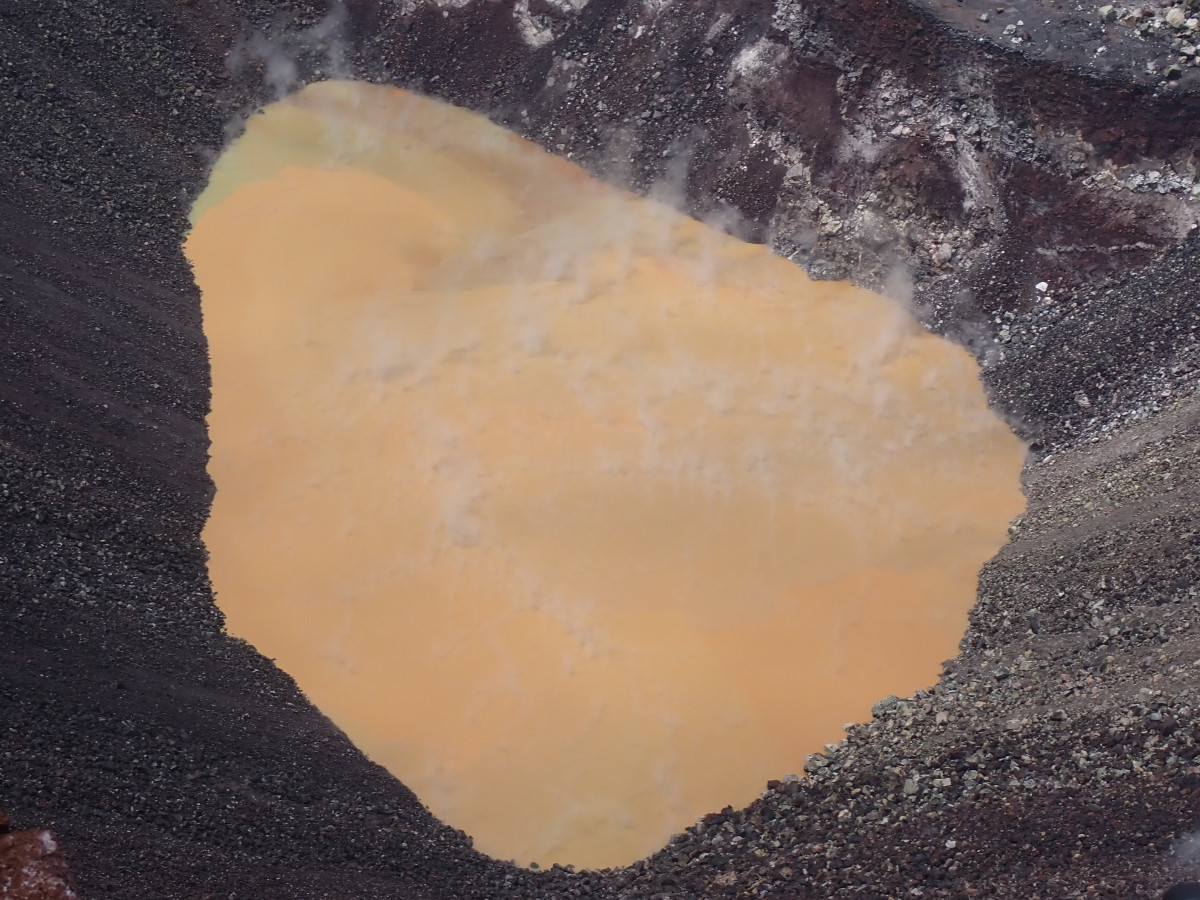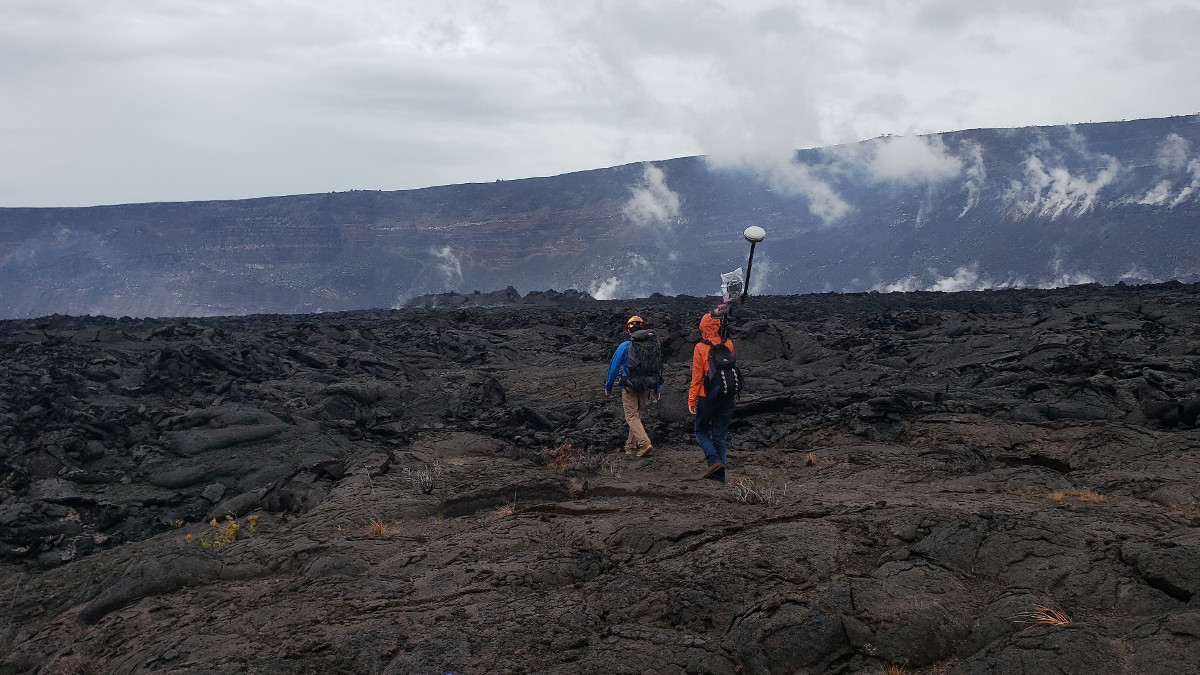
USGS: This view shows Kīlauea’s water lake from the east side of the crater. On September 23, 2020, the western portion of the lake (top of image) was the most varied in color, with patches of greenish and brown water. The majority of the lake surface, however, was the typical tan hue. USGS photo by M. Patrick.
(BIVN) – Kīlauea Volcano is not erupting. Scientists with the USGS Hawaiian Volcano Observatory recently issued a new activity update, and noted an uptick in earthquakes for the month of September compared to the month before.
From the USGS HVO update:
There were approximately 1450 earthquakes during the month of September at Kīlauea, an increase of roughly 35% from the number of earthquakes recorded in August.
Over the past month, summit tiltmeters recorded 4 deflation-inflation events—a significant decrease from last month’s total. The long-term trend of deformation at Kilauea’s summit and middle East Rift Zone continue to show inflation, consistent with magma supply to the volcano’s shallow storage system. GPS stations on Kīlauea’s south flank continue to show elevated rates of seaward motion. HVO continues to carefully monitor all data streams along the Kīlauea East Rift Zone and south flank for important changes.
Sulfur dioxide emission rates are low at the summit, consistent with no significant shallowing of magma. Some amount of sulfur dioxide is being dissolved into shallow groundwater and the crater lake at the bottom of Halema‘uma‘u; work continues to try and quantify this process. As of September 29th, the lake depth was approximately 46 meters or 150 feet. The crater lake was last sampled by UAS in January and additional sampling with UAS is planned. Sulfur dioxide emission rates are below detection limits at Puʻu ʻŌʻō and the lower East Rift Zone
Although not currently erupting, areas of persistently elevated ground temperatures and minor release of gases are still found in the vicinity of the 2018 lower East Rift Zone fissures. These include steam (water), very small amounts of hydrogen sulfide, and carbon dioxide. These conditions are expected to be long-term. Similar conditions following the 1955 eruption continued for years to decades.
Hazards: Hazards remain in the lower East Rift Zone eruption area and at the Kīlauea summit. Residents and visitors near the 2018 fissures, lava flows, and summit collapse area should heed Hawaii County Civil Defense and National Park warnings. Lava flows and features created by the 2018 eruption are primarily on private property and persons are asked to be respectful and not enter or park on private property.
The Hawaiian Volcano Observatory (HVO) continues to closely monitor geologic changes, seismicity, deformation, and gas emissions for any sign of increased activity at Kīlauea. HVO maintains visual surveillance of the volcano with web cameras and field visits. Additional messages and alert level changes will be issued as warranted by changing activity.


by Big Island Video News8:35 am
on at
STORY SUMMARY
HAWAIʻI ISLAND - Scientists say there continues to be variable but typical rates of seismicity and ground deformation and low rates of sulfur dioxide emissions at Kilauea volcano.